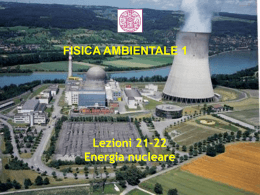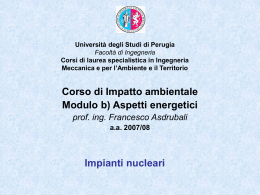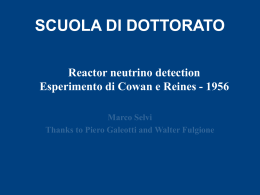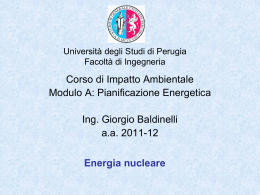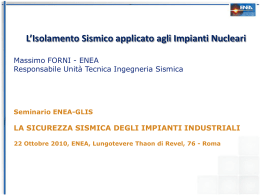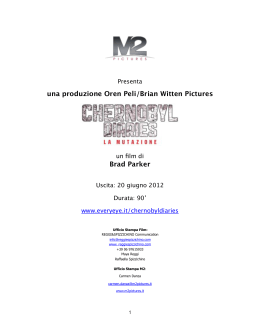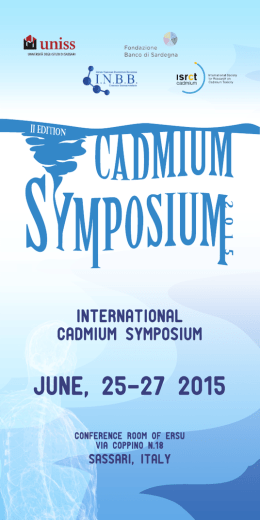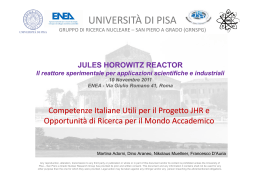The anti-neutrino discovery e p e n inverse beta decay 10 cm s 13 2300 MW reactor usful flux Inverse -decay cross section? e p e n 10 cm 43 2 how can we get it? 2 1 l’esperimento di Cowan-Reines La scoperta dell’antineutrino 1953. Prototipo esperimento di Cowan e Reines,al reattore Hanford Eng.Work, Washington state Cowan Reines 1953 La scoperta del neutrino: il principio dell’esperimento Acqua e cadmio (400l) In un potente reattore gli antineutrini provengono dal decadimento di neclei radioattivi prodotti dallafissione di 235U e 238U. Scintillatore liquido L’antineutrino reagisce con un protone nell’acqua e produce un neutrone ed un positrone Il positrone annichila in gamma quasi immediatamente Il neutrone viene rallentato e catturato da un nucleo di cadmio, emettendo molti gamma, a distanza di vari microsecondi I gamma vengono rivelati dallo scintillatore: la firma dell’evento sono i due impulsi prodotti dai fototubi che vedono gli scintillatori The experiment of Reines and Cowan The target is made of about 400 liters of water mixed with cadmium chloride (cadmium water in gray on the picture). The anti-neutrino coming from the nuclear reactor interacts with a proton of the target, giving a positron and a neutron. The positron annihilates with an electron of target and gives two simultaneous photons. The neutron slows down before being eventually captured by a cadmium nucleus, that gives the emission of photons about one 15 microseconds after those of the positron. All those photons are detected and the 15 microseconds identify the "neutrino" interaction. 1956. Savannah reactor experiment, SouthCarolina. 10 tonnellate La firma dell’evento: due impulsi a distanza di 15,5 microsecondi
Scarica
